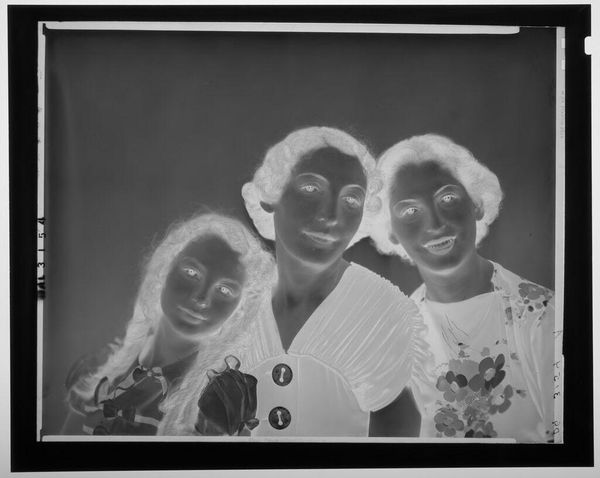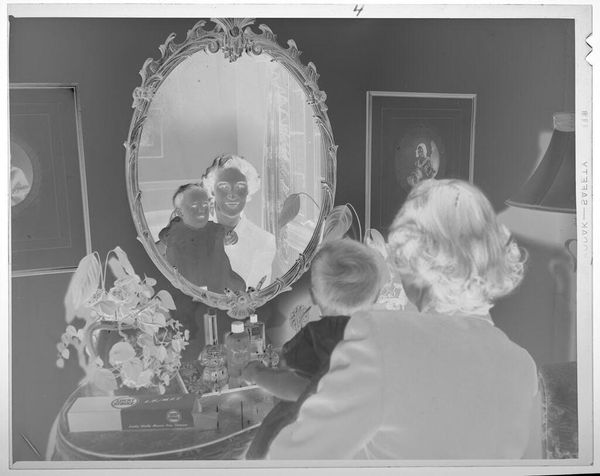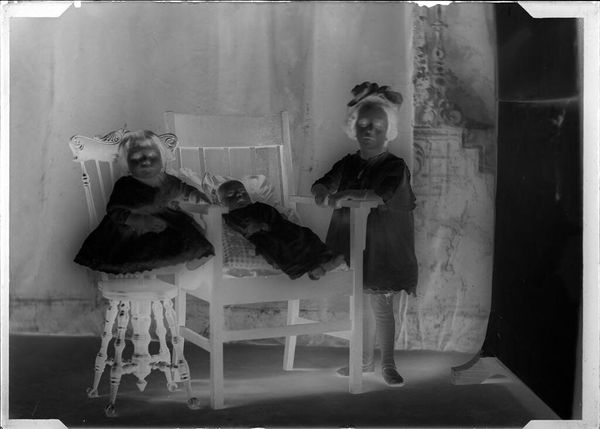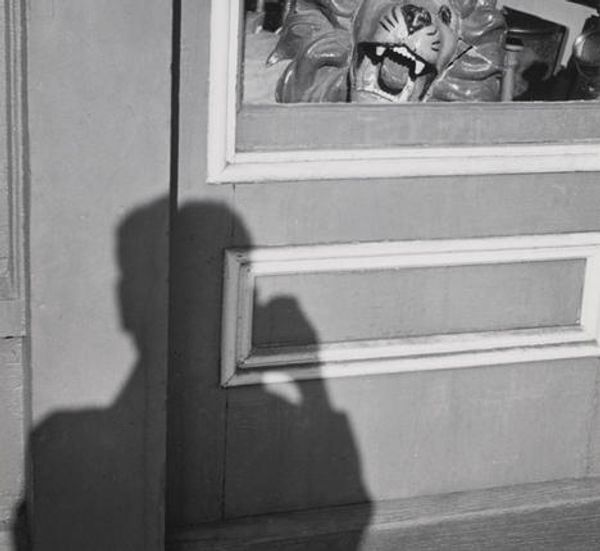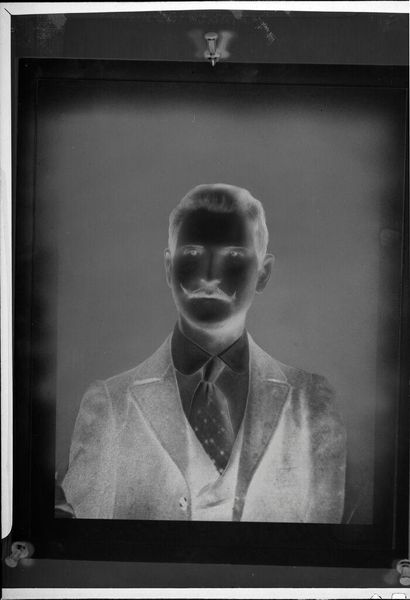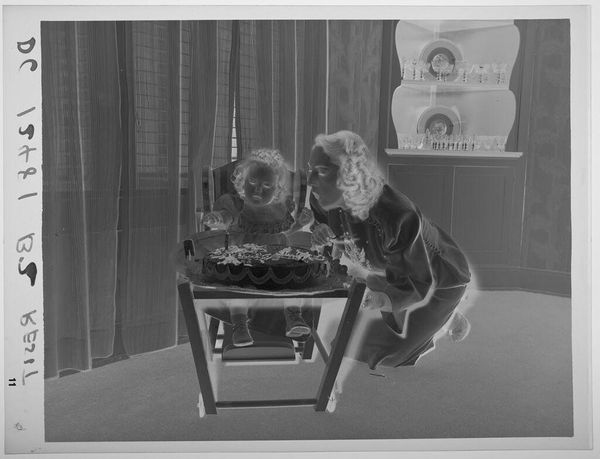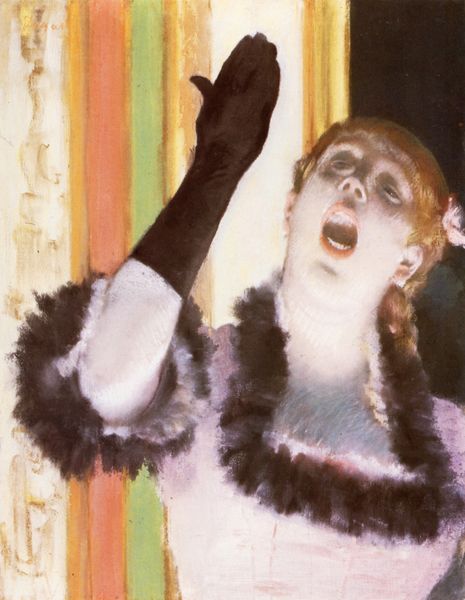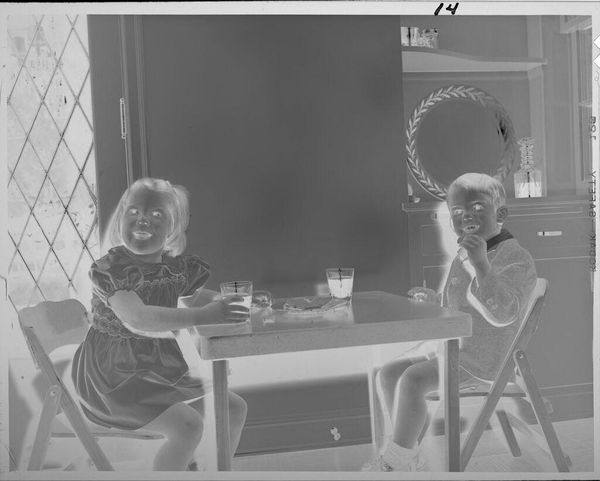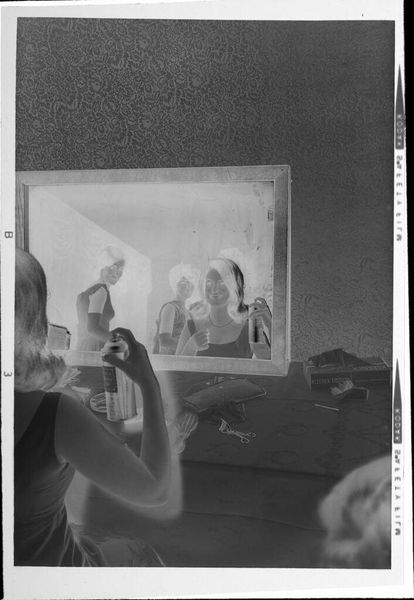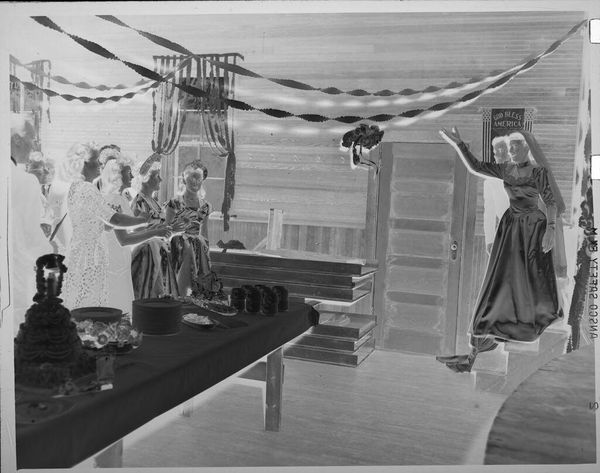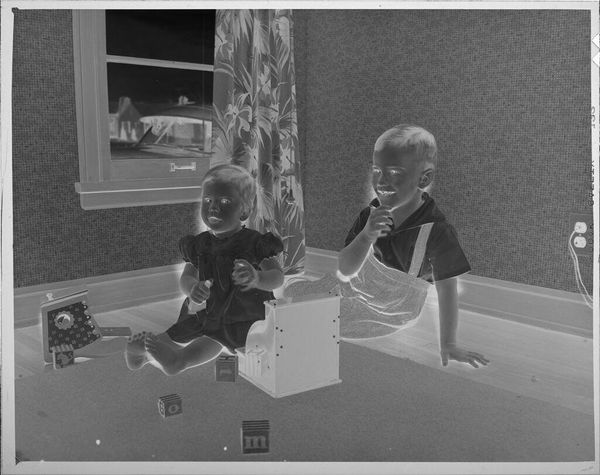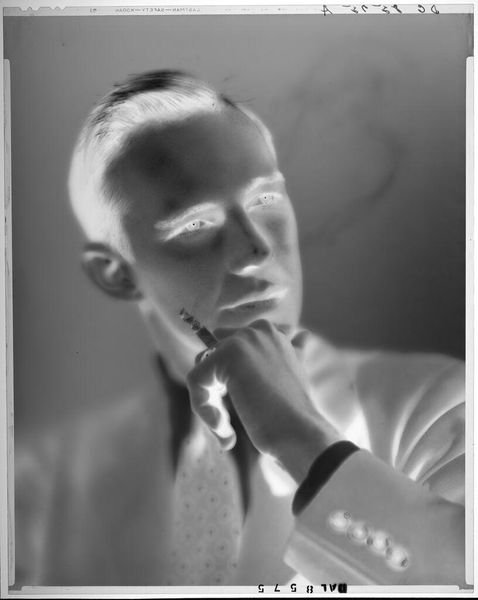
photography, photomontage
#
portrait
#
self-portrait
#
black and white photography
#
photography
#
photomontage
#
black and white
#
monochrome photography
#
monochrome
#
surrealism
Copyright: Claude Cahun,Fair Use
Curator: Here we have a "Self Portrait" by Claude Cahun. It’s a black and white photomontage featuring the artist in two mirrors. Editor: The texture of this photograph intrigues me, that combination of the flat, almost clinical background and the softness of Cahun's garments. It feels almost ghostly, with the repeating images…a reflection of alienation. Curator: Absolutely. Cahun often employed mirrors and doubling to explore fragmented identities and challenge fixed notions of gender. Note the repetition—visual echoes intended to break down a singular self. Editor: There is a clear distinction in the use of textiles: the harlequin-esque diamond pattern shirt contrasted with the horizontal nautical stripes. Both mass-produced, calling into question what kind of identity the artist can achieve under modern capitalism. Curator: The harlequin echoes back to Commedia dell'arte and themes of deception. It might signal hidden facets within the artist's persona, suggesting multiple selves performing on life's stage. Meanwhile, the nautical imagery points to the vastness of experience. Editor: So the production methods themselves--photomontage—feel relevant. Snipping, pasting, the physical labor that shapes Cahun’s self-image becomes just as significant as the symbolic intent. This contrasts starkly with idealized, classical notions of portraiture. Curator: Precisely. Cahun reclaims authorship, dismantling conventional portraiture to embody fluidity. This isn’t simply about surface representation, it’s a complex layering of performative selves presented through symbolic acts and reflections. Editor: It forces me to wonder what the printing process would have been like then—the chemicals, paper stock, darkroom labor involved in bringing forth these shades of gray, shades of identity. Curator: Considering the sociopolitical environment of the early 20th century and the increasing fluidity of identity that it was a witness to, it’s incredibly relevant. Editor: In all, it gives me a newfound awareness about labor’s hand in constructing art…and identity. Curator: For me, this photograph emphasizes that identity is a performance—an ever-changing, reflective dialogue, rather than a fixed, stable point.
Comments
No comments
Be the first to comment and join the conversation on the ultimate creative platform.
